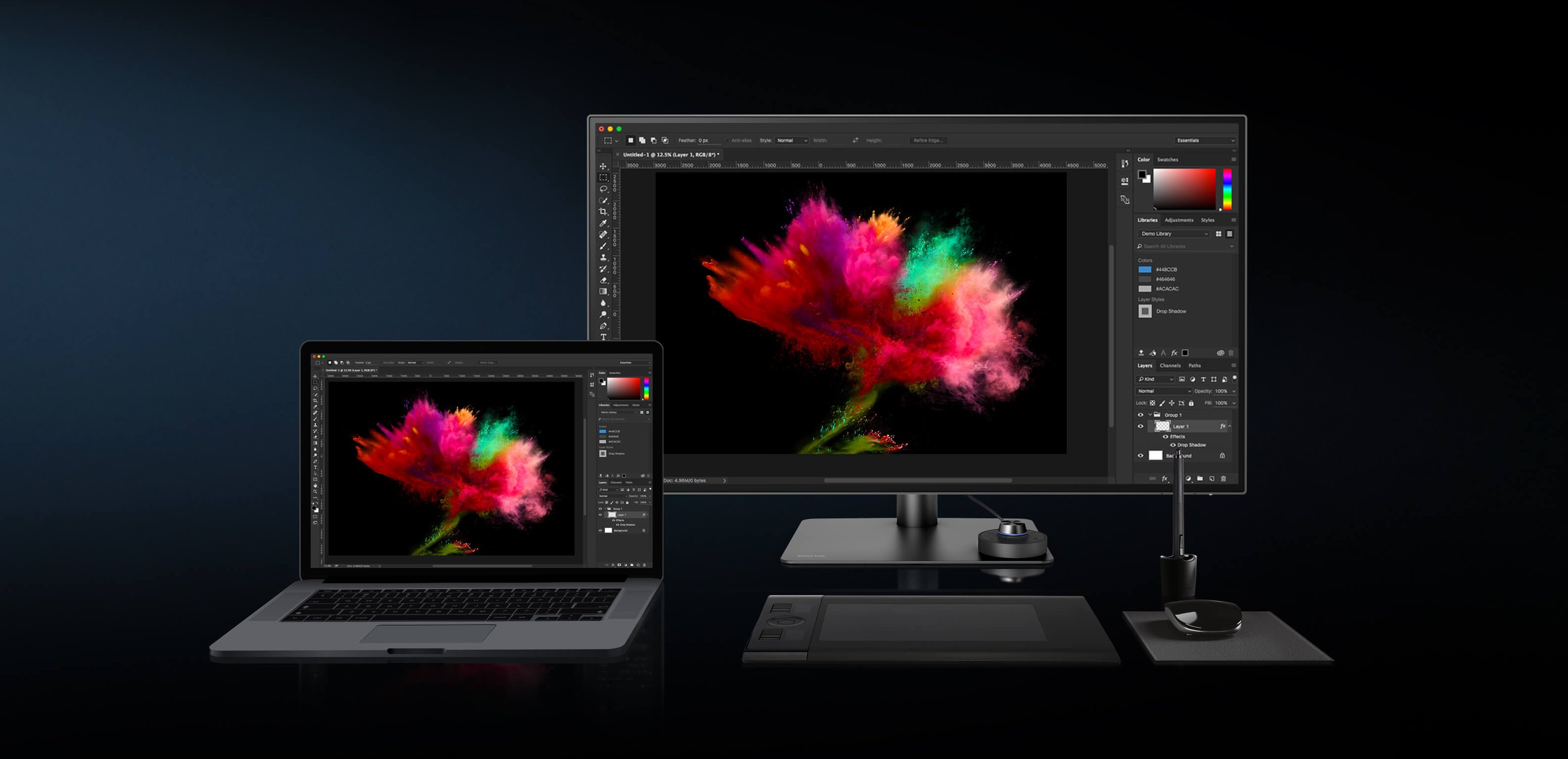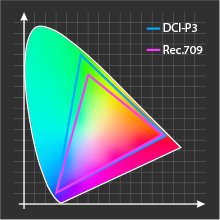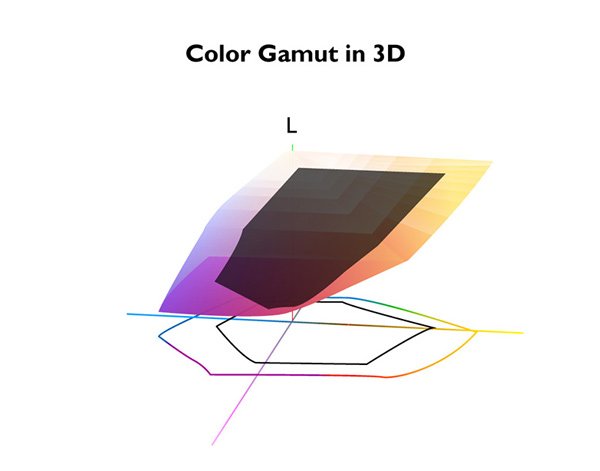


At the dawn of mankind the greatest projector in the world debuted.
This projector accurately reproduces all of the colors and shades and tones of the natural world.
It is accurate in all lighting conditions and the bulb never burns out.
This projector is organic and ultra-portable. It fits inside the human head.
Is this the best projector known to man?
Let’s say the eyes have it.
Reproducing what the human eye sees in video projectors and digital computer monitors has been an evolution. Many manufacturers vie to deliver a real-world experience to the home theatres and offices around the world. Devices are created and refined, and standards are set to set a bar for performance.
One of the primary areas of focus (pun intended) for video projectors is color gamut, or the range of colors that we can see, and a projector tries to recreate. In an earlier Knowledge Center post we explored the origins of color theory and color space and the work Young and Grassmann. We explained color models like RGB, Adobe RGB and sRGB and how they attempted to reproduce the natural color gamut, or range of visible colors in all their shady glory.
In this post we’ll take a deeper dive into the latest standards for color, Rec. 709 and DCI-P3, and what lies ahead. We’ll also show you how BenQ is on the leading edge of this technology.
There was a big jump from black and white television to color in the 1960s. Viewers were astounded to see that Lucille Ball’s hair really was red and Gilligan was marooned on a technicolor island.
Standard definition television in a 4:3 aspect ratio evolved into high definition with a 16:9 aspect ratio (like a movie screen) and a new standard was approved. Along came the ITU-R Recommendation BT.709, a.k.a. Rec.709, BT.709 and ITU709. ITU-R stands for the International Television Union Recommendation.
Rec. 709, first introduced in 1990, set the standard for high definition television in the 16:9, or widescreen, ratio. Rec. 709 controls how color space is used in HD video productions. Even though this is associated with HD resolution, it is still the most common color space for delivering higher resolutions like UHD 4K for home video content. Rec. 709 is actually the same as sRGB in regard to color gamut, meaning all HDTVs and monitors should be able to accurately display the gamut, or range of colors, in the color space.
For many years the main color gamut that had been used for producing almost all consumer content for digital cameras, HD TVs, the internet, and computers, including photos, videos, and movies was the dual standard of sRGB/ Rec. 709. For the viewer to see accurate colors for this content on just about any consumer product, then the display or projector needs to match the standard, because otherwise, the colors will then appear “wrong” and also be either too saturated or under-saturated.

Rec. 709 uses specific red, green and blue colors and illuminant D65 (6500k) for the white point to build a standardized color space and reproduce an accurate color gamut and grayscale. Illuminant D65 is a commonly used standard defined by the International Commission on Illumination (CIE) to represent average daylight with a correlating color temperature of approximately 6500 Kelvin or k. Indoor light, or “tungsten,” has a color temperature of 3200 Kelvin, or k.
Our technology put men on the moon and machines on Mars, but it has yet been unable to capture all the colors in the “real” world like our head-mounted, internal projector eyes can. Projectors, printers and monitors have their color reproducing limits. But, technology does not rest. A new standard is here. Ladies and gentlemen, children of all ages, may we present…DCI-P3!
Digital Cinema Initiatives (DCI), is an association of cinema production companies including Warner Bros, MGM, Twentieth Century Fox Film, Universal Studios and SONY Pictures Entertainment. DCI-P3, introduced by DCI to cover the color range of cinema, has 25% more color space than sRGB. As we all started watching movies on different platforms such as smartphones, tablets or computers, companies started to introduce DCI-P3 into their devices to achieve better color reproduction than using sRGB. Many products from Apple, Sony, Samsung and Google use the DCI-P3 standard. DCI-P3 becoming the new standard of devices, websites and software and replacing the sRGB. We want a cinema experience outside the multiplex and on the go, and DCI-P3 helps us get there.
To simplify, DCI-P3 is a video-oriented wide gamut color space. It goes beyond the sRGB space, as stated above, and does a better job of reproducing the ranges of reds and yellows. Display P3 is the standard for monitors.
Color gamuts define how many colors can be displayed and seen. So…a wide color gamut can display more colors than a standard one (thank you, Capt. Obvious), leading to more vibrant tones and more realistic imagery. Wider gamuts can show what the film makers want you to see. Color gamuts determine what the final output looks like, whether that is a television broadcast, a print, or displayed by a digital cinema projector. In post-production, a colorist working on a program for TV may want a Rec. 709 display, so that what they are looking at perfectly matches what most TVs can show, and they can perform fine tuning to get the exact look they want. A photographer, on the other hand, would be better suited to an Adobe RGB monitor because it will produce colors closer to what the photographer will see in their final print.


We have evolved from black and white to color to HD to 4K. 4K resolution has brought more pixels to screens – four times that of 1080p HD. Wide Color Gamut (WCG) and High Dynamic Range (HDR) are the factors that enable you to watch Game of Thrones and feel like you’re actually in the bright Red Keep or the dreary crypt of Winterfell.
Apple made WCG popular with the launch of the iPhone 8. WCG to put it simply enables projectors, TVs and monitors to display more life-like colors, closer to what our eyes see. WCG achieves this by, 1) enlarging the color range to deepen primary colors of reds, greens and blues and enrich the secondary colors magenta, cyan and yellow. And by 2) increasing the bit depth. Bit depth describes how many “steps” of each color a device has available. There are more shades between turquoise blue to dark blue and from candy apple red to brick red, for instance.
More shades of color means to more color overall. An HDTV can display 16 million colors. WCG TVs can display 1 billion colors. HDR extends the dynamic range by bringing in the dynamics of luminance, or brightness. WCG brings out more color vibrancy because it can store a wider range of color values than previous color spaces like sRGB.